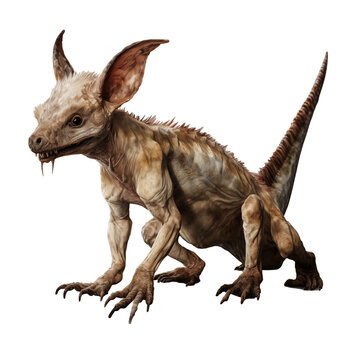The Chupacabra: Unmasking Latin America’s Most Notorious Cryptid
Mysterious World of Cryptids Blog Series

In the shadowy folklore of Latin America, few creatures strike as much fear as the Chupacabra, a name that literally translates to “goat-sucker.” First emerging in Puerto Rico during the mid-1990s, this bizarre predator quickly became infamous for its alleged attacks on livestock, leaving behind drained carcasses and terrified rural communities. Unlike ancient cryptids like Nessie or Bigfoot, the Chupacabra is a distinctly modern legend, born from a mix of panic, media frenzy, and genuine mystery.
The first documented reports surfaced in 1995 in the small town of Moca, Puerto Rico, where farmers discovered eight dead sheep, each bearing three puncture wounds on their chests and completely drained of blood. Eyewitnesses described a creature roughly three to four feet tall, with reptilian skin, large red eyes, and sharp quills running down its spine. Some accounts claimed it could leap astonishing distances, fueling speculation about supernatural origins.
As reports spread across Latin America and into the southern United States, the Chupacabra’s appearance evolved dramatically. In Mexico and Texas, witnesses described a hairless, dog-like beast with elongated limbs and pronounced fangs – a far cry from the spined Puerto Rican original. This physical inconsistency has led researchers to propose that multiple species or phenomena might be conflated under the Chupacabra name.
Scientific investigations have offered plausible explanations for many Chupacabra cases. Wildlife experts note that the “blood-drained” livestock phenomenon can often be attributed to natural predators like coyotes or foxes, which target soft tissue and leave puncture-like wounds. Many “Chupacabra” carcasses later proved to be coyotes suffering from severe mange, a parasitic condition causing hair loss and grotesque skin lesions that give the animals an otherworldly appearance.
Yet some aspects of the legend resist easy dismissal. In 2010, a farmer in Nicaragua captured a hairless, blue-skinned creature that baffled zoologists (later identified as a strange breed of hairless dog). The psychological impact of Chupacabra hysteria is undeniable, with entire villages instituting night watches and farmers reporting eerie sounds echoing from the jungle. Pop culture has amplified the myth through horror films, comic books, and even a SyFy Channel mockumentary, blending folklore with fiction until the lines blur irreversibly.
What makes the Chupacabra uniquely compelling is its reflection of modern anxieties. Emerging during an era of economic instability in Puerto Rico, the legend tapped into fears of invasive forces beyond human control. Unlike Bigfoot or Nessie, which evoke wonder, the Chupacabra embodies primal terror – a monstrous intruder that disrupts livelihoods and defies explanation.
Is the Chupacabra real? While most cases have rational explanations, the legend persists because it speaks to something deeper than biology: our need to give form to the unknown. Until the next wave of sightings, this vampiric cryptid remains a potent symbol of humanity’s oldest instinct – to fear what hunts in the dark.
Coming next in The Mysterious World of Cryptids: We’ll venture into the mist-shrouded forests of the Pacific Northwest to examine Mothman, the winged harbinger of doom whose eerie appearances are said to precede disasters. From the collapse of the Silver Bridge to modern-day sightings, is this creature a supernatural omen or something even stranger? Stay tuned.